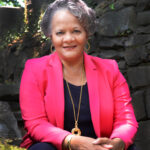By Dr. Cheryl Renée Gooch
The Partnership is thrilled to continue Voices of Downtown Frederick – a blog series highlighting the many communities that help make Downtown Frederick special. This month’s blog celebrates a walkaround downtown with Frederick Douglass on Valentine’s Day and is written by Dr. Cheryl Renée Gooch.
The distinguished abolitionist and human rights champion delivered one of his most popular lectures in Frederick on April 8, 1879, at the former City Hall and Opera House, now Brewer’s Alley. A widely sought orator, Douglass came to Frederick to help raise funds to remodel Quinn African Methodist Episcopal Church on East Third Street in Downtown Frederick. Born into slavery in Talbot County, MD, he was insatiably curious from his youth, a trait that led him to learn to read, write, and explore facts about his life, including his birthdate. The exact date was never verified, but his mother, Harriet Bailey, called him her “Little Valentine.” Thereafter, he chose to celebrate February 14, 1818 to honor this memory.
Places of memory and historical importance resonated with Douglass whose eclectic interests ranged from poetry to politics. In some ways he embodied our shared history as Marylanders and Americans, including our patriotism.
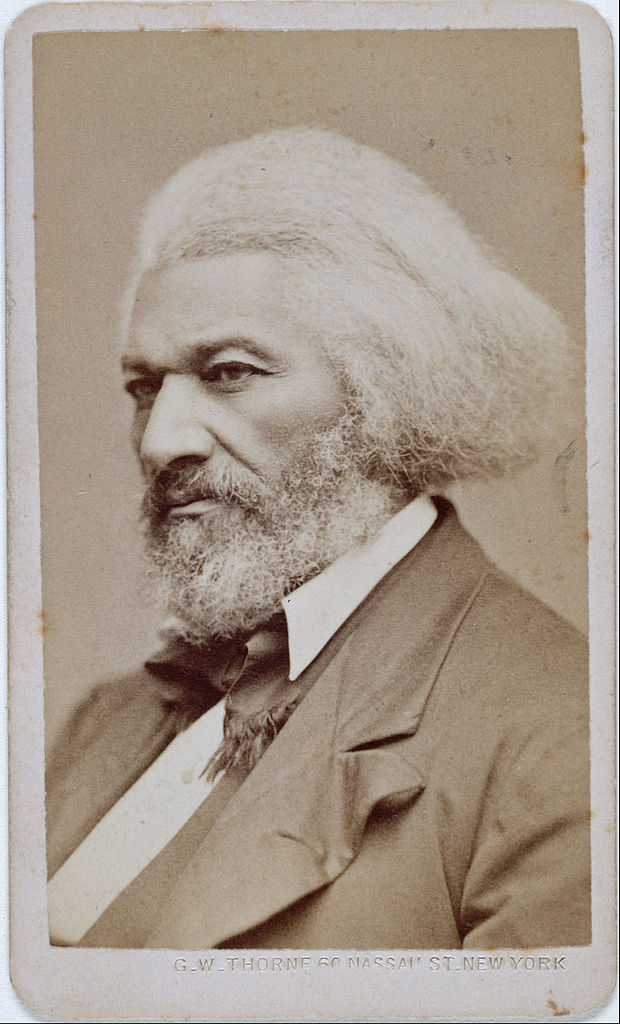
Our Shared Patriotism
How do we express patriotism while embracing our diverse, complex history as Americans? Crucial questions in this current social-political environment.
Deemed one of his most popular speeches, Douglass had presented “Self-Made Man” for at least two decades before his Frederick visit. Its key points: individuals are entitled to freedom, to own property and pursue free enterprise; people could rise above their circumstances and become successful if their freedom is respected; and the government should protect these freedoms and rights.
Douglass embraced and championed the inalienable rights and freedoms enshrined in the Declaration of Independence and United States Constitution, and seized every opportunity to convey his sentiments to diverse audiences here and abroad.
He was a consciously historical man with keen memory. As he stepped off the B &O train downtown, echoes of President Abraham Lincoln’s 1862 comments to Frederick residents during the Civil War likely inspired Douglass who held Lincoln in high regard. Lincoln thanked “the good citizens of Frederick, and.. all the good men, women and children throughout this land for their devotion to our glorious cause.” That cause included the reunification of our country under one flag, and grew to include the emancipation of four million Americans held in bondage, and the enlistment of more than 200,000 Black men as soldiers (including more than 400 from Frederick County) to save the union.
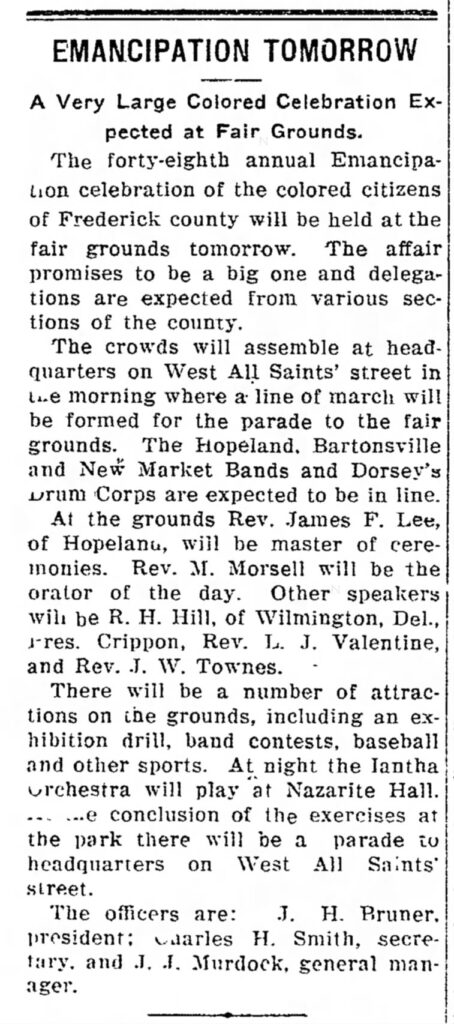
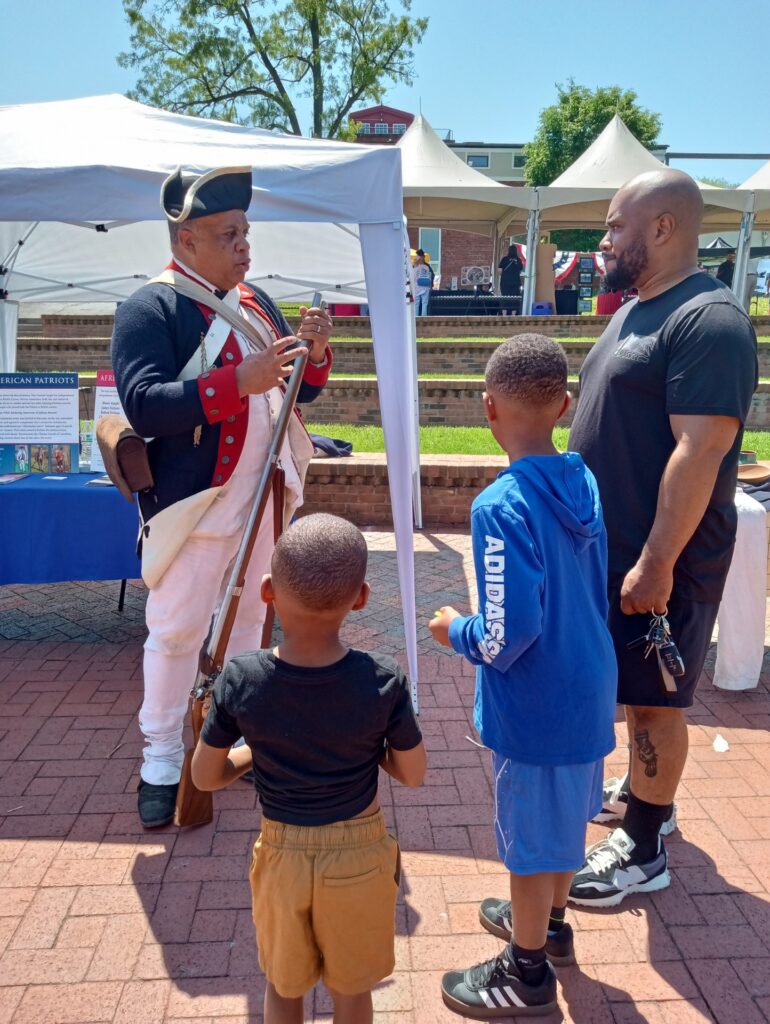
Traveling north on Market Street, Douglass could have imagined the marching of both Union and Confederate troops along and across the same street. Perhaps someone pointed out Kemp Hall at Market and East Church where the Maryland Legislature decided to not secede from the Union; and the banks that provided portions of General Jubal Early’s $200,000 ransom including Farmers and Mechanics, Central Bank, and Fredericktown Savings Institution.
Douglass surely imagined the annual Emancipation Day parades that began on West All Saints and streamed along this favored route and out to the Fairgrounds.
Having self-liberated from slavery, assisted freedom seekers, and successfully lobbied President Lincoln to approve the enlistment of African American soldiers to help end the rebellion and slavery, Douglass understood his place and role in America’s history. So, Frederick’s history, known and imagined, resonated with him. Visiting the picturesque Court House Square where in 1776 Frederick leaders read resolutions for independence, he would have recalled the role of Black Patriots in securing America’s independence. While he may not have heard the names of some of Frederick’s Black Patriots, including John Allsop; Pompey Colless; Henry Dalton; James Dean; Marsham Dean; John Hawkins; Moses Knight; James Nickens; Robert Nickens; Charles Pierpoint; and Charles Scott; and Abraham Warrick, he knew their fight for American freedom and independence would inspire generations of citizens to uphold America’s ideals of freedom and equality.
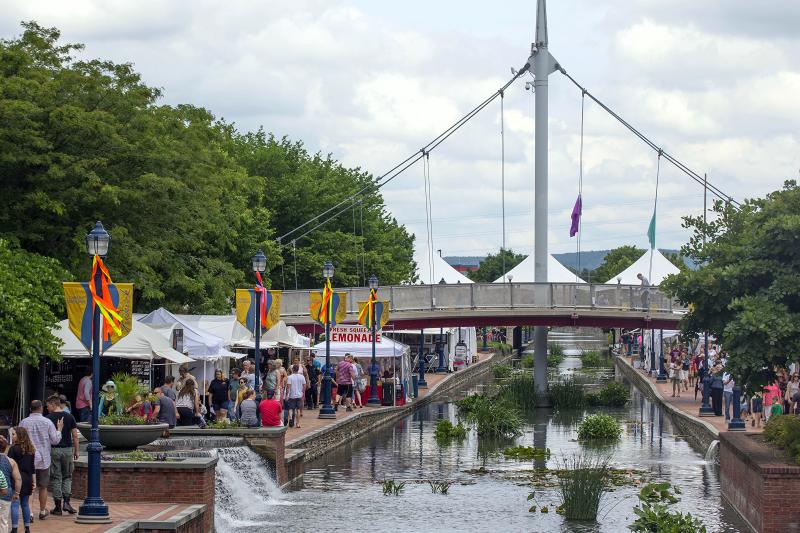
Could Douglass have imagined that 145 years after he crossed or walked along Carroll Creek an African-American Revolutionary War re-enactor would educate visitors about these often forgotten patriots at the 2024 annual History Fair? Or, that the William O. Lee Memorial Bridge, dedicated to one of Frederick’s most revered citizens devoted to celebrating and preserving our shared history and patriotism, would span the beautifully restored Creek?
“E Pluribus Unum” Out of Many, One
Dr. Cheryl Renée Gooch is a historian, educator and museum consultant working with the National Park Service and Delaware Division of Historical and Cultural Affairs. She served as Executive Director of AARCH (African American Resources-Cultural Heritage Society) in Frederick, 2023-2025.
